Our models
The lifelike structures that make our railway special
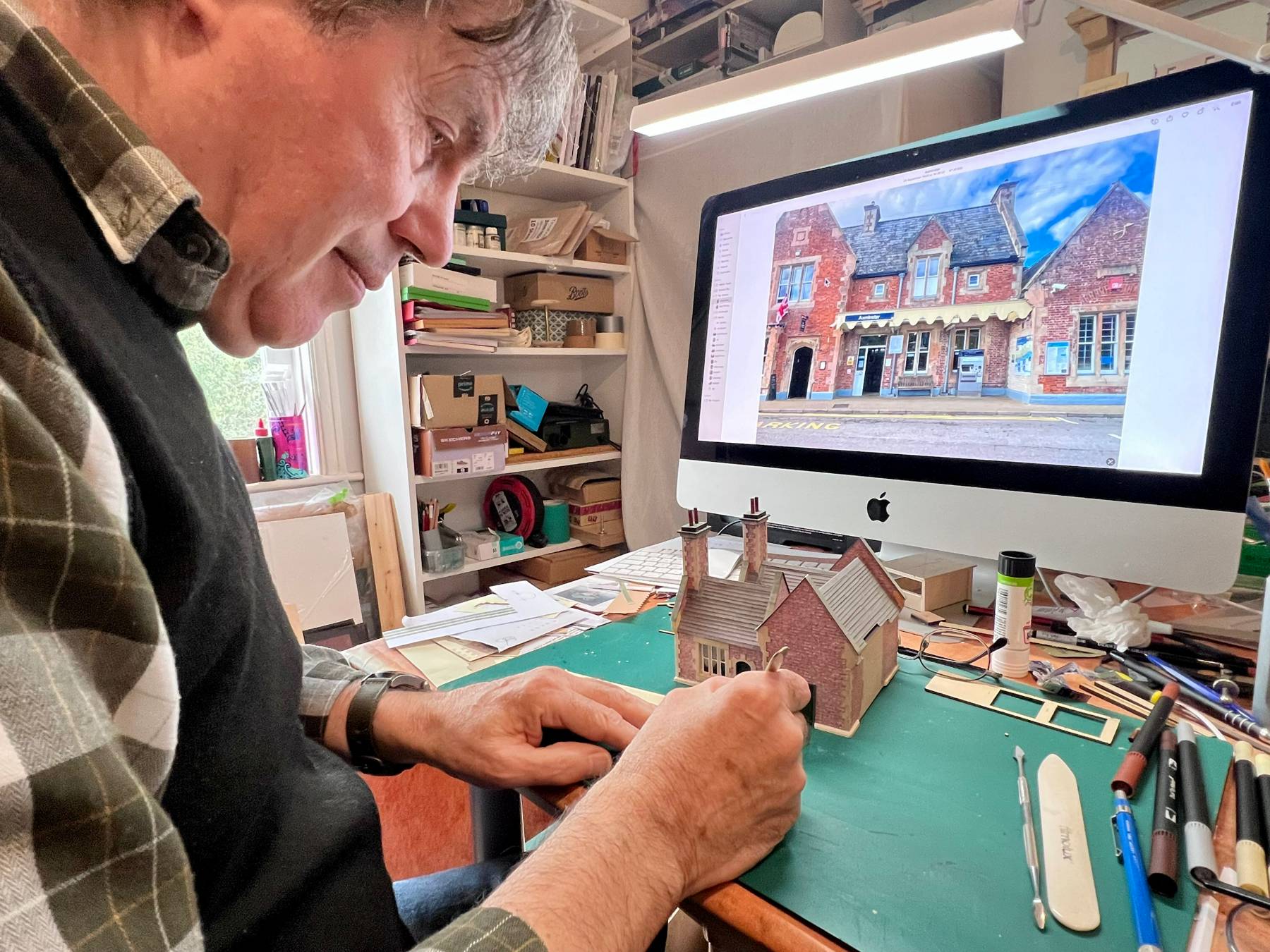
How we achieve perfection
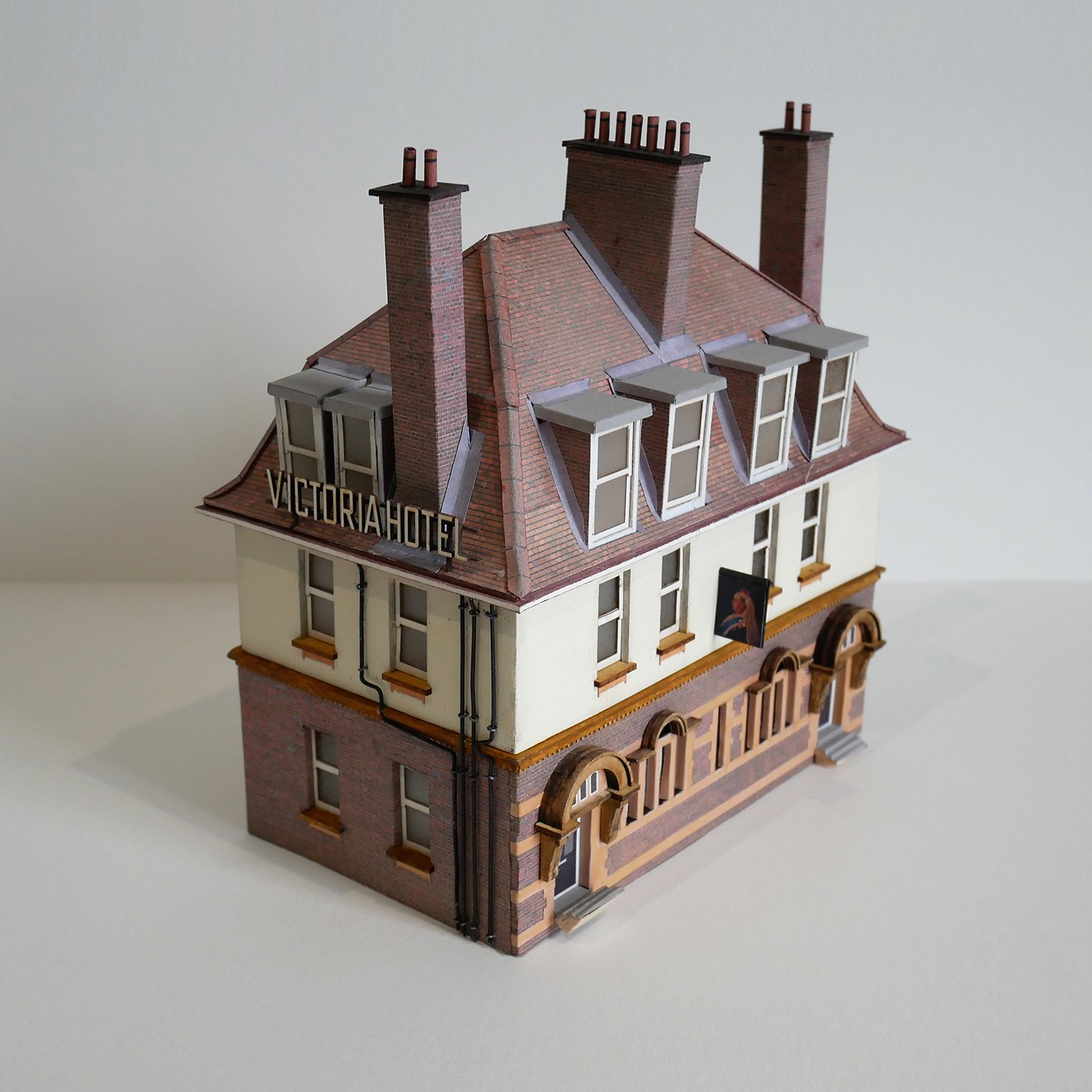
Victoria Hotel, Lyme Regis: Geoff Hicks
The Victoria Hotel was a hive of activity in the days when the famous old branch line from Axminster terminated there, high above the town. When the line closed in 1965 the station buildings were removed but the George continued as a popular pub, guest house and restaurant until 2007, when it was converted into apartments.
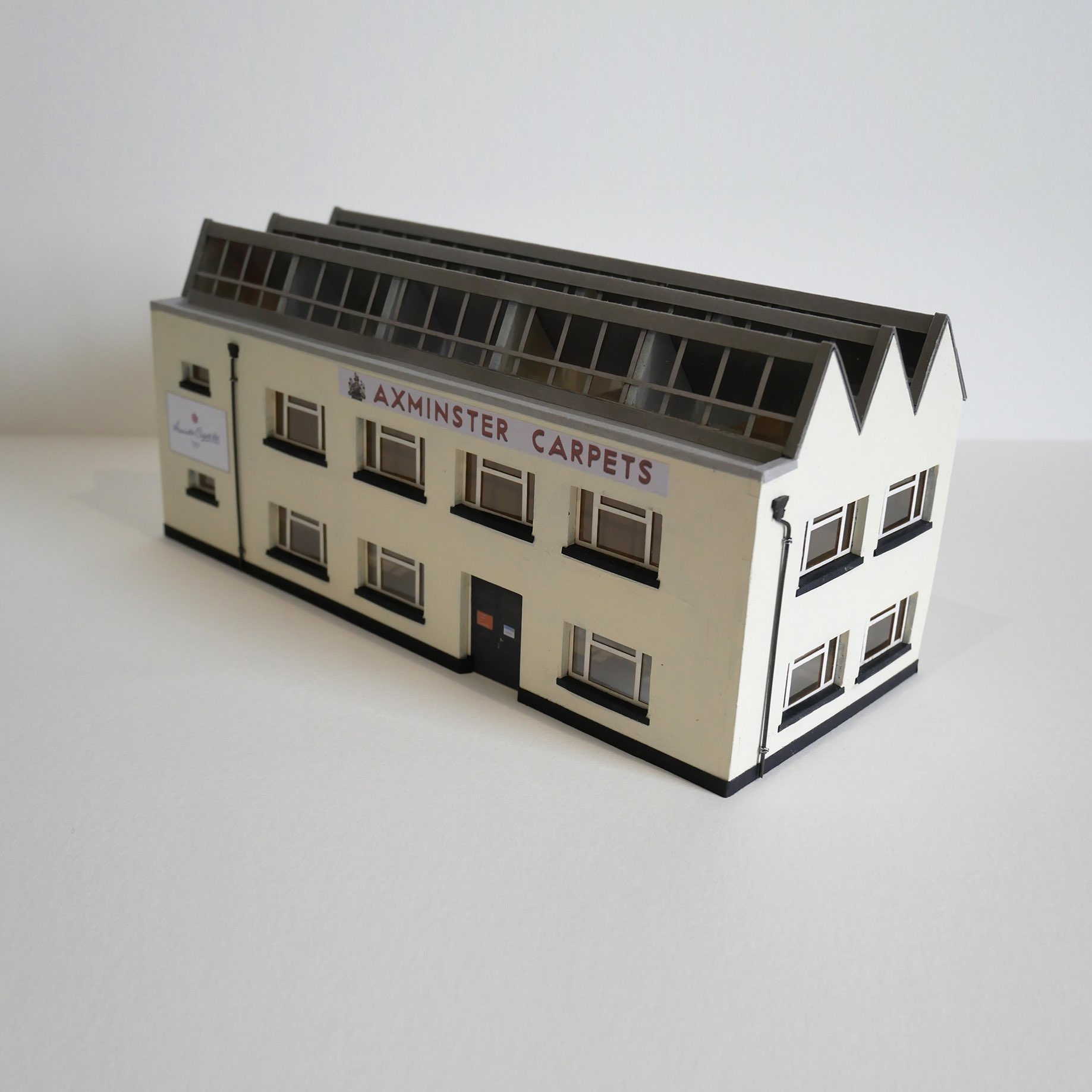
Axminster Carpets: Geoff Hicks
Axminster is renowned throughout the UK and much of the world as the home of the Axminster Carpet, so it simply had to be a part of our thinking! We also wanted some evidence of local industry amongst our modelled buildings. Key for Geoff was the detail in the roof line, which lets light into an otherwise dark industrial workplace.
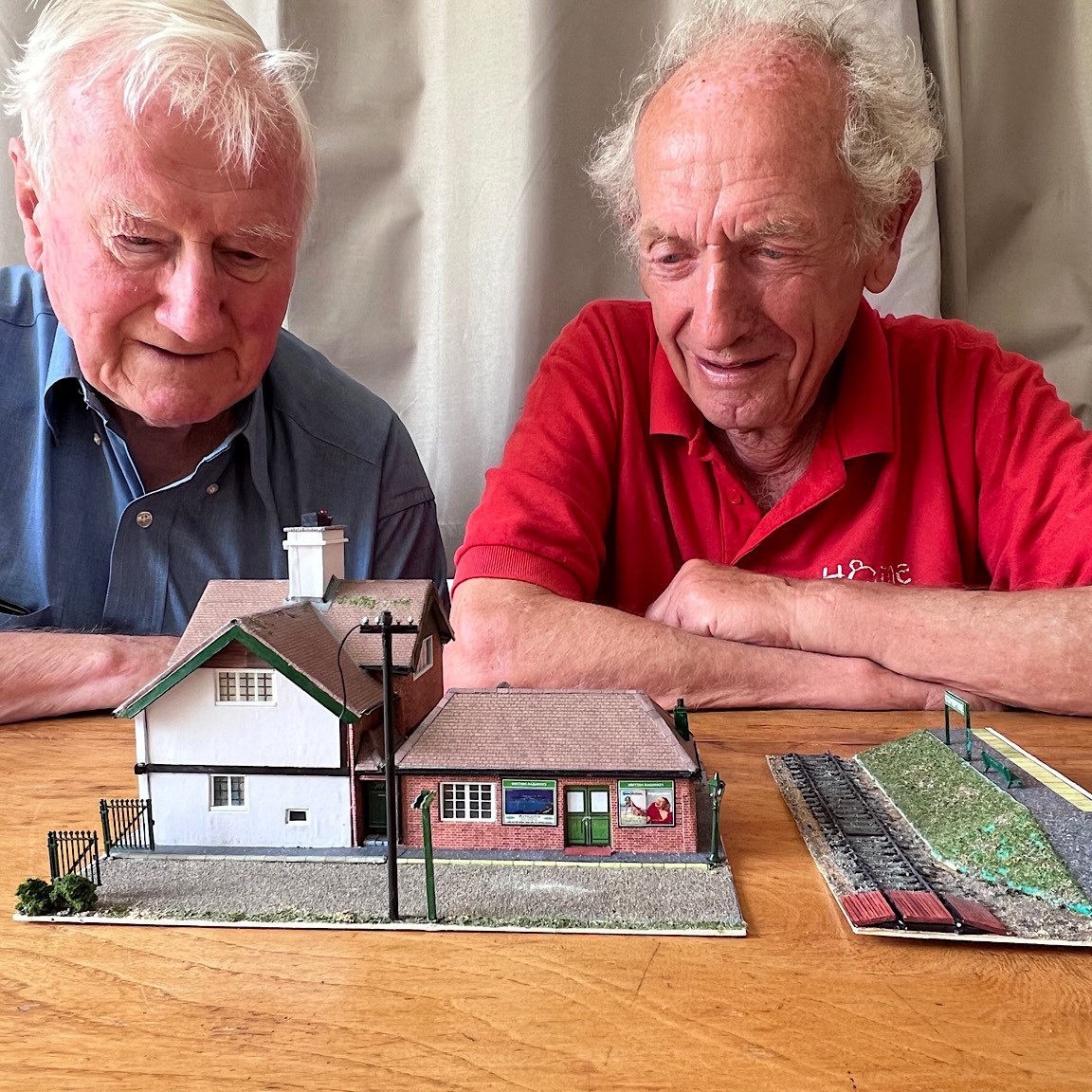
Combpyne Station: Richard Proctor
Combypyne was the only station stop along the line and has its own special place in the story. It operated throughout its life without electricity or running water but the facilities it did have included a ‘camping coach’ where you could book a holiday. We asked Richard to model it for us and, with the benefit of a lot of thorough research, he did a superb job. Richard is shown here (left) showing the model to Brian Dale who went on to modernise and still lives in the Station Master’s house.
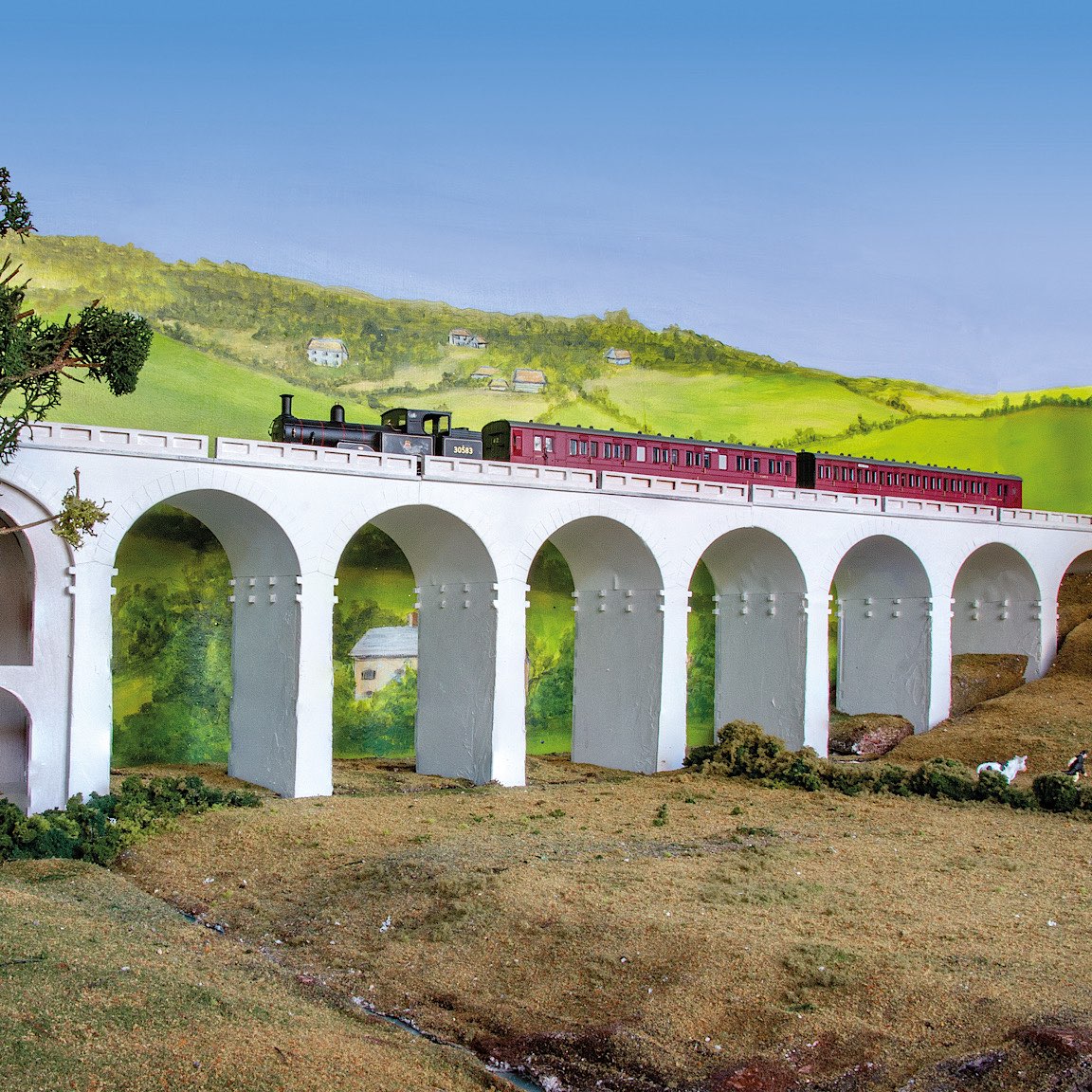
Cannington Viaduct: Geoff Hicks
Building a model of the iconic Cannington Viaduct posed quite a challenge, not least in terms of down-scaling it to fit the available space and achieving the colour and texture of the mainly concrete structure. Geoff had the benefit of a flat-bed laser cutter to achieve the accuracy, and speed up what would otherwise have been a massive project. One important variation from the original was that the single track had to become double to enable a continuous running loop. Painting was achieved with an artist’s gesso to give a slightly textured white finish with discolourations to suggest ageing, then spray varnished. The result, we hope you will agree, is stunning.

Axminster Railway Station: Geoff Hicks
Opened in 1860 by the London & South Western Railway, Axminster Station represents one of the town’s most iconic architectural features. Its classic Victorian design was echoed by several others in the region in that great railway era. For Geoff, its large gabled roof line, tall chimneys, stone mullion windows and complex brickwork posed quite a challenge.

Cottages: Lucinda Cliff
Every cottage and every terraced house counts on a model where their role is to set the tone for many more. Lucinda is not just a talented model maker but someone who loves the local area and who studied the local vernacular around Lyme Regis in particular before coming up with her beautiful cottages. Each has been lovingly designed , painted and landscaped with the plants that always went with homes of that type.

Lyme Regis Engine Shed: Holly Daubany-Nunn
A typical railway line of old had its own collection of buildings and structures that all came together to make the system work - from the station buildings themselves to signal boxes and even the engine sheds where the locos spent their rest times and received basic maintenance. Holly contributed a beautiful engine shed of the type that existed at Lyme Regis station for our model. The real one has quite a history, burning down in 1912 and then finally being destroyed in 1966 in another blaze following closure.